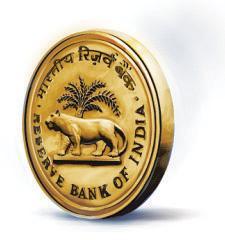MUMBAI: The Reserve Bank of India (RBI) has cautioned that Big Tech companies that can quickly become “too big to fail” and dominate markets, could present significant challenges in assessing risk profiles due to their unique characteristics, extensive group entities, interconnected activities, and transnational presence.
The RBI’s Currency and Finance Report for 2023-24, which was released on Monday, said that there could be adverse economic and welfare outcomes with collection of extensive data by Big Techs, which they can utilise to favour their own products.
The report also cautioned that higher margins obtained by Big Techs by making financial institutions access prospective clients via their platforms, engaging in product bundling, and cross-subsidising activities, may have adverse outcomes.
In India, six banks have collaborated with seven Big Techs in the UPI payment space and most of these collaborations involve private banks. Big Tech-backed applications have made their mark in the Indian payment industry, with more than 90 per cent share in UPI payment volume and value, the report said.
Big Tech platforms offer multiple contactless payment options such as payment through gateways, platform-specific digital wallets, co-branded credit cards, converting purchase bills into equated monthly instalments (EMIs, or no-cost EMI), and Buy Now Pay Later (BNPL).
Five Big Techs have entered into collaborations with four private banks and five non-banking finance companies (NBFCs) for offering BNPL through their platforms. Co-branded credit cards are also offered in collaboration with the four banks, the report said.
Standard EMIs and no-cost EMIs are the most available lending options on Big Tech platforms. These EMIs are offered mainly through three channels: co-branded credit cards, credit and debit cards of banks, and BNPL.
At the same time, the RBI has suggested that there exists scope for seamless integration between financial services and non-financial Big Tech platforms to enhance user experiences.
Adoption of digital technologies has enhanced efficiency of Indian banks and increased competition within the sector, the report said.
Additionally, it highlighted that digitalization in the financial sector enables banks to reduce various risks and improves integration across various financial markets, thus, boosting liquidity in these markets.
“Digitalisation has improved operating efficiency of Indian banks. Improved real-time monitoring, and diversification into new markets and products, facilitated by digitalization, is mitigating risks in the banking sector. Digitalisation also has the potential to make financial markets more integrated and liquid,” the RBI said.
However, it has warned that as traditional lending institutions rapidly embrace new technologies and broaden their service offerings in collaboration with Fintechs, there are regulatory complexities that arise in the wake of the emerging financial activities, given the absence of definitive regulatory frameworks governing the technologies involved.
Hence, fostering a regulatory environment that encourages responsible innovation while prioritising financial stability and customer protection remains paramount to the RBI, it said, adding that self-regulatory organisations can effectively promote responsible practices and ethical standards within the industry.
According to the RBI, Fintechs have shown the way for providing contactless, paperless, and cashless banking services in an efficient and scalable manner. They have emerged as significant partners to banks and NBFCs, enabling them to leverage the latest technologies.
Payment Fintechs feature prominently in partnerships with financial institutions, followed by lending and banking technology Fintechs. Concurrently, collaborations with Big Techs and B2C e-commerce startups have transformed the lending landscape, the RBI said.
Partnerships between banks/NBFCs and Fintechs are mutually beneficial, as the latter offer superior user experiences and scalability, while the former bring a large client base and expertise in navigating the complex regulatory landscape.
Source: Business Standard




 Paris Olympics: It Is French, Exuberant, Original And Inclusive
Paris Olympics: It Is French, Exuberant, Original And Inclusive 